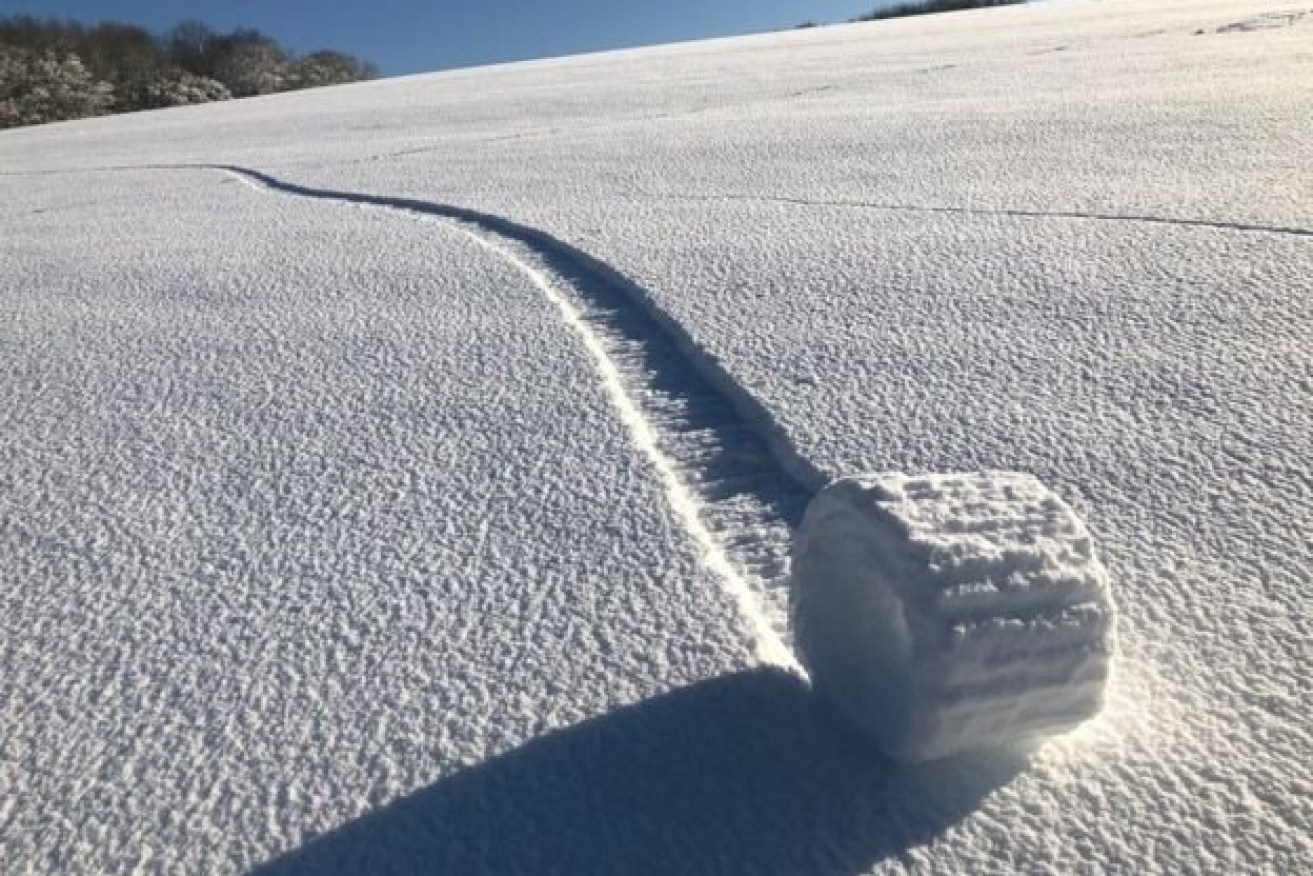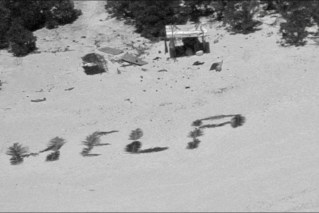Discovery of rare ‘snow rollers’ explained


While rare, there is a scientific explanation for the formations. Photo: Brian Bayliss/Twitter
A UK forestry worker was left perplexed when he encountered large, wheel-like snow formations trailing tracks across his farm field in south-west England.
Brian Bayliss, 51, originally thought the formations were man-made. That was until he realised there were no footprints in the pristine snow surrounding the bizarre, doughnut-like circles.
He told the BBC he had “never seen anything like it before”.
As Mr Bayliss got closer to the wheels, he said he “could see the sun through the middle, and they just made no sense”.
But thankfully there’s a rational explanation.
The weird wheels of snow, while extremely rare, are a naturally forming phenomenon commonly known as “snow rollers”.

The snow balls look like a haybale. Photo: Twitter
Also known around the world as “snow bales”, “wind snowballs” or “snow donuts”, it is believed the rollers are formed only when a combination of ideal wind conditions combine with certain terrain to blow bundles of snow along.
The wheels of snow gather in size along the way, resulting in a wheel-like shape with distinct track behind it.
In the past few years, snow rollers have appeared in the US, Canada, and Scotland.
They’re most likely to be found in a place with a slope, which can help the snow roll.
It is thought that if the wind is too strong, or too weak, or the snow is too tightly packed, snow rollers will not form.

The formations require a combination of perfect conditions to form. Photo: Flickr
BBC weatherman Ian Fergusson said weather conditions need to be almost perfect for snow rollers to form.
“These are truly beautiful photos of a very rare meteorological phenomenon – called snow rollers or snow bales. Brian was very lucky to see these,” Mr Fergusson was quoted as saying.
“Conditions have to be just right for snow rollers to occur: A smooth, un-vegetated hillside, such as in this case near Marlborough, enhances the chance of them being formed.
“A layer of thin snow, settled atop existing ice and not sticking to it, combined with specific temperature, moisture level and wind speed, are fundamental to the creation of these natural oddities.”
-with agencies








